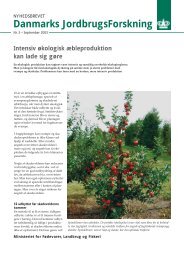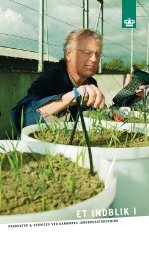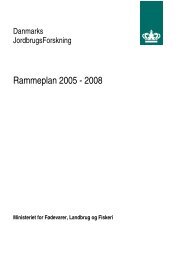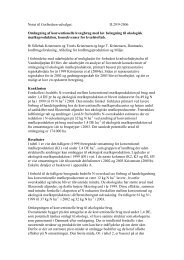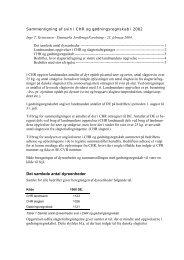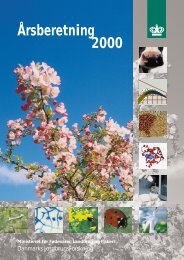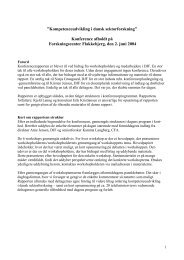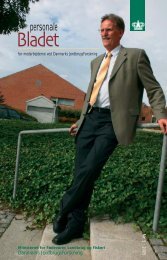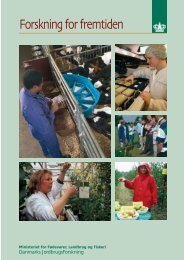Reproduction performances and conditions of group-housed non ...
Reproduction performances and conditions of group-housed non ...
Reproduction performances and conditions of group-housed non ...
Create successful ePaper yourself
Turn your PDF publications into a flip-book with our unique Google optimized e-Paper software.
- General discussion -<br />
lem, because three weeks after mating their reproduction will already have been impaired.<br />
However, assessment <strong>of</strong> back fat gain can provide the farm manager with valuable indica-<br />
tions <strong>of</strong> whether variation in back fat gain, in general, could be a contributing reason for<br />
impaired reproduction in <strong>group</strong> <strong>housed</strong> sows. The time necessary for back fat measurements<br />
was not recorded in this farm study. However, the back fat measurements were estimated<br />
to be possible to perform within two or three minutes per sow including finding the<br />
measuring points, shaving <strong>and</strong> measuring. A recent Danish test trial showed that back fat<br />
measurements with a similar digital ultrasound back fat indicator, in average requested approximately<br />
one minute per sow if the measuring points were marked <strong>and</strong> the sows were<br />
shaved in advance (Thorup, 2004 pers. comm.). This, in combination with a low price<br />
(DKK 4,800 ~ EUR 650) makes LEAN-MEATER® a potential management tool. However,<br />
the suitability <strong>of</strong> the equipment has recently been questioned due to a large withinobserver<br />
variation, which makes it inappropriate for use at individual sow-level (Thorup,<br />
pers. comm.). More accurate two-dimensional back fat indicators are available on the market.<br />
As some <strong>of</strong> these can be used for pregnancy diagnosis too, they will perhaps be potential<br />
management tools in spite <strong>of</strong> the considerable larger price.<br />
The 14 herds involved in the farm study differed markedly with respect to the reproduction<br />
performance <strong>of</strong> the approximately 40 sows observed per herd. Return percentage varied<br />
from 0 to 45% with an average <strong>of</strong> 11% <strong>and</strong> litter size differed from 13.6 to 15.7 with an<br />
average <strong>of</strong> 14.8 total born piglets per litter. These figures support the assumption that <strong>group</strong><br />
housing <strong>of</strong> <strong>non</strong>-lactating sows does not ‘automatically’ lead to poor reproduction performance<br />
<strong>and</strong> further that it will be possible to improve the reproduction performance in some<br />
commercial herds.<br />
Improving the reproduction <strong>performances</strong> is, however, not the only challenge that managers<br />
<strong>of</strong> <strong>group</strong> <strong>housed</strong> sows are facing. Group housing was implemented with the aim to improve<br />
the animal welfare in commercial pig production. However, submissive sows eating in less<br />
than 20% <strong>of</strong> all observations during feeding because they are kept away from the feed,<br />
sows having less than 10 mm back fat at farrowing <strong>and</strong> sows with more than 150 skin lesions<br />
at the end <strong>of</strong> the gestation, as found in the present farm study are not equal to animal<br />
welfare. Therefore, efforts should be made to improve not only the reproduction performance<br />
but also the animal welfare in <strong>group</strong> <strong>housed</strong> sows.<br />
106




